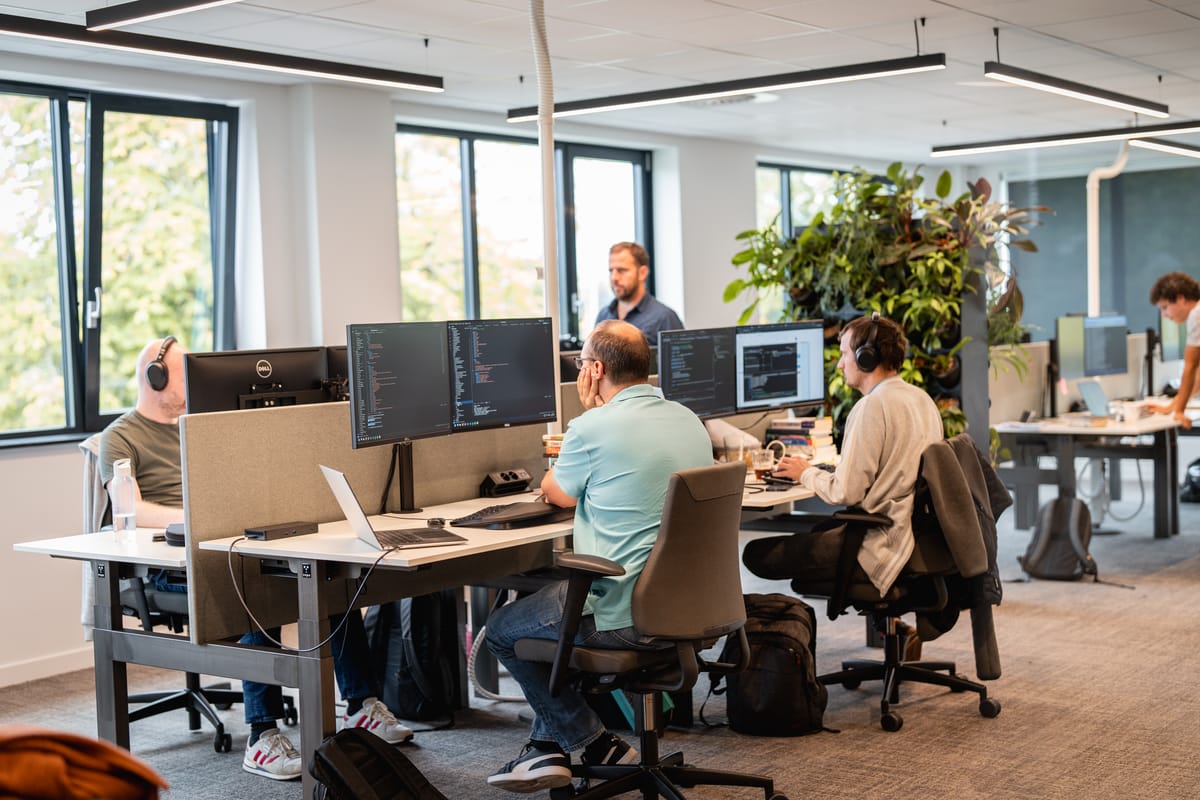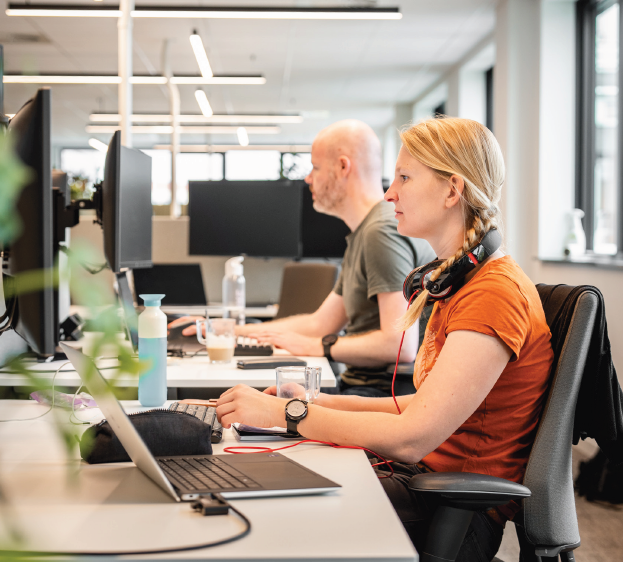Company Visit Ecare

Emiel is a software developer at Ecare, where he is part of the so-called infrastructure team. This team creates the building blocks that other teams can use for the various products at Ecare. Emiel works on the design system as a front-end developer, together with a UX designer.
Ecare: Healthcare technology
“At Ecare, we make software that supports professionals in home, residential, disabled and mental healthcare. The aim of our software is to make work processes and administration easier and more efficient for healthcare professionals. This way, they can focus on what they do best: providing the best possible care for their clients.
Our approach revolves around supporting healthcare practitioners with our software. They are the experts in their field, equipped with the knowledge and
skills to treat clients effectively. Our applications aim to maximize practitioners’
time with clients, putting the responsibility squarely in their hands. Unlike systems that dictate step-by-step procedures, our software provides reminders without taking control away from healthcare professionals. In our development process, we always prioritize this principle. For instance, in our automatic measurement detection, which - through a machine learning algorithm detects certain indicators in written text, the system then seeks confirmation. As such, we always make sure that the practitioners remain in control - information isn’t automatically integrated without their approval. This commitment to putting healthcare professionals in charge is a constant consideration in our innovations.”
Company structure (or lack thereof)
A noteworthy detail about Ecare is that it is a holacracy-based company, meaning that there are no managers or other forms of hierarchy. Each team is independently functioning and responsible for what they do. To keep different
teams going in the same direction, there are company-wide strategy statements
that teams can use as a guideline.
Employees also do not necessarily have a single role, but can assume multiple roles at the same time. For example, Emiel has the role of front-end enabler next to being a front-end developer. For this role he helps other teams with their front-end questions, keeps track, and shares new developments in front-end technology. Although teams are free to choose their preferred way of working, most teams in Ecare work according to scrum, so next to developers there are also testers and product owners. The scrum master role is usually an addition to the role of developer.
One other surprising fact about Ecare is that they have a four-day working week, meaning everyone is free on Friday. Emiel feels like this really helps in motivation and creativity. After three days of weekend he is looking forward to going to work again.

Design system
The infrastructure team, where Emiel works as a front end developer, is responsible for the design system within the company. The design system is a set of guidelines and components that the other teams can use to quickly build their applications. It is a library of React components together with its documentation, as well as a set of guidelines on colors, fonts, what texts to put on buttons, and error messages. Since the building blocks in the design system are used all over Ecare, automated tests are an important part of the project. Before the introduction of the design system, various product teams independently implemented similar features, but now they are adapting to the design system.
The infrastructure team does not completely invent everything themselves: the system is built on top of pre-existing research. The team combines several research sources to come up with their own rules suitable for healthcare. In some cases, the rules go further than things like Material Design from Google, and in some aspects they go less in depth. For example, there are clear guidelines
on how to label buttons. Ecare’s software is in Dutch, so buttons are labeled first with the object that the button will interact on, and then the verb, making it more clear for Dutch speakers. That is a guideline that Material Design does not include.
The infrastructure team tries to make components look nice, but also to assure accessibility. For example for keyboard users and people with eyesight problems. One example of where accessibility was improved is the tooltip component. This component is usually an “i” icon that serves as a tooltip that you can hover over to get some additional information. This is not very user friendly, as with smaller screens, the tooltip can open out of view, which cannot be rectified by keyboard users. The infrastructure team created something new for that, and encouraged all the teams to use it instead of the previous version. The component shows the same “i” icon, but instead of a tooltip, it expands underneath. You can click on it once or press spacebar on it, and it shows up, remaining visible for as long as you want. A simple change, but very important for accessibility.
A challenge that the infrastructure team faces is the search for new components and guidelines. Since they are not working on products directly, requests for functions always have to come from other teams. However, this introduces a new challenge to be taken into account. When a client needs a new function, it could be implemented for a specific product only, while it might be useful for all products. The infrastructure team thus tries to keep up with everything that is happening inside the organization, for example visiting reviews of all the teams. In this way something that might be useful as a component or guideline and can be discovered.
PUUR.: Smart electronic client file
When visiting the website of Ecare it becomes clear that PUUR. is at the core of all their products. PUUR. products are smart electronic client files, meaning that healthcare professionals can keep track of client data through a digital system. It started from what is now one of Ecare’s biggest clients: Buurtzorg. They wanted to reorganize the way that they gave care to the clients. Seeing that many available healthcare applications were aimed at step-by-step procedures and they wanted to give back the responsibility to the caretakers. The system was developed inhouse and later on, other healthcare companies became interested. Ecare was created as a means to build and maintain the system. From there, it grew as there was a demand for this innovative approach.
Students and Ecare
“We offer internships, master’s assignments, and bachelor’s assignments. These assignments vary wildly, so we have some UI/UX, back end, front-end, all kinds of assignments. We usually have three or four interns/graduates walking around here.”
An example of a recent project is from a master student studying Creative Technology. She researched if it would be helpful to have to give caretakers a smartwatch to record reports so they can leave the laptop at home. Whenever they are with clients they can just click and talk. Then at the end of the day, when they get back home, they can look at their laptops and see what they filled in. To get in touch with us, students can look at our website: https://ecare.nl
We have a separate website for job openings and internships, which includes contact details: https://werkenbijecare.nl/


